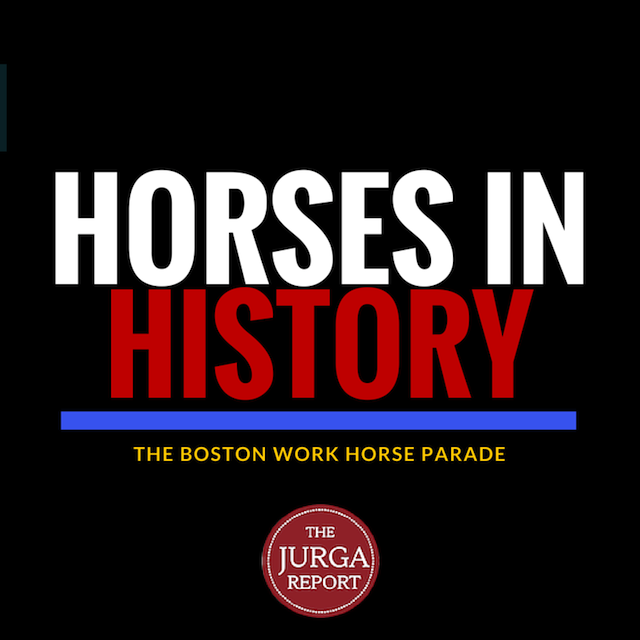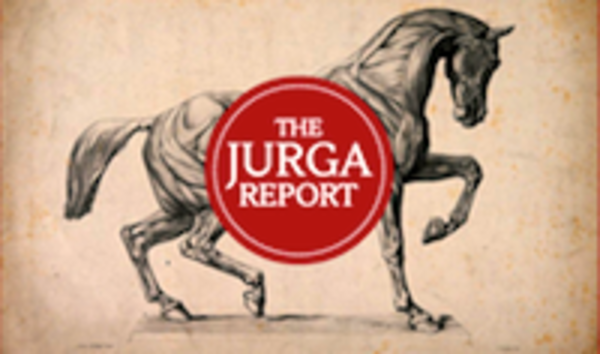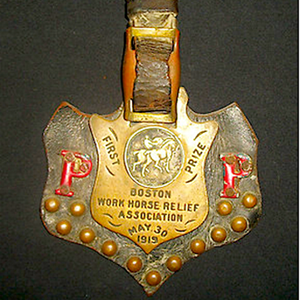
It’s Memorial Day. Our duty today is to remember those lost in war.
But there’s a little scrap of horse history related to Memorial Day that doesn’t get much press. For decades, some of the main streets of Boston were off limits to cars and trucks on Memorial Day, which was always celebrated on May 30.
It was a special day in Boston, and people came out to watch. But this was no ordinary Memorial Day parade. It was the day for the Work Horse Parade.

Begun in 1903, Boston’s was the first parade for working city horses in the nation. The idea was to create an event not to punish those who didn’t take good care of their delivery horses, but to reward those who did. Work horses were the public representation of a company, the organizers believed, and a reward to a company for taking good care of its horses was good publicity. Let people wonder about the companies who didn’t participate!
The event was a success from the start. That first parade was four miles long, with 154 companies participating. They marched 433 horses down the streets of Boston to show how well they were cared for. But ten years later, the event had grown so much that there were now 534 companies, and 1,213 horses in the streets. They were competing for 873 different awards, so more than half the horses would wear a ribbon or trophy medallion at the end of the day.
There were classes for old horses, city-owned horses (with separate divisions for park and street horses), hucksters, barrel racks, laundries, delivery wagons, express wagons, milk dealers, egg/fish/provisioners, bakers and confectioners’ horses, grocers, bottlers, furniture and movers, lumber-hauling horses, ice horses, coal horses, contractors’ horses, single truckmen, double truckmen, three-horse truckmen, four-horse truckmen, mules, hospitals, and a special medal for veteran drivers who had been with the same company. In later years, fire department horses were added.
Throughout the day, the members of the Work Horse Parade Association distributed leaflets on caring for horses.
The idea caught on in other cities. Soon New York, Philadelphia and Baltimore were hosting annual work horse parades on Decoration Day. The Philadelphia parade was staffed by veterinarians from the University of Pennsylvania vet school.

The parade group in Boston was active throughout the year, not just on Memorial Day. They campaigned for the horses and even inspected stables and helped retire horses to a farm set up just for them, Red Acre Farm in Stow, Massachusetts.
The parade preached 18 rules for taking care of work horses. How much has horsecare changed in the past 100 years? None of us probably has ever had a horse that worked as hard as these city horses did, day in and day out. But here are the tenets for their care, and most are still what we would advise today.
1.— The best order in feeding is: Water, hay, water again, grain.
2.— Never give grain to a tired horse. Let him rest and nibble hay for an hour or two first. Grain in the manger before the horse comes in looks had.
3.—Water the horses as often as possible; but let the horse that comes in hot drink a few swallows only, until he is cool.
4.—Always water the horse after he has eaten his hay at night. Do not go to bed leaving him thirsty all night.
5.— Do not forget to salt the horse once a week; or, better yet, keep salt always before him. He knows best how much he needs.
6.— Give a bran mash Saturday night or Sunday noon and on Wednesday night also, if work is slack. After a long day in very cold or wet weather, a hot mash, half bran and half oats, with a tablespoonful of ginger, will do the horse good. Put very little salt, if any, in the mash.
7.— If the horse does not eat well, or slobbers, examine his teeth.
8.— Keep a good, deep, dry bed under the horse while he is in the stable, day or night, on Sundays especially. The more he lies down, the longer his legs and feet will last.
9.— In order to do well, the horse must be kept warm. Give him a blanket on cool nights in late summer or early fall, and an extra blanket on an extra cold night in winter.
10.— In cold rains, do not tie up the horse’s tail. The long tail prevents the water from running down the inside of his legs, and keeps off a current of air from his belly.
11.— Take off the harness, collar and all, when the horse comes in to feed. He will rest better without it.
12.— Never put a horse up dirty or muddy for the night. At least brush his legs and belly, and straighten his hair.
13.— In hot weather, and in all weathers if the horse is hot, sponge his eyes, nose, dock, the harness marks, and the inside of his hindquarters when he first comes in.
14.—When the horse comes in wet with rain, first scrape him, then blanket him, and rub his head, neck, loins and legs. If the weather is cold put on an extra blanket in 20 minutes. Change the wet blanket when the horse dries. Do not wash the legs. Rub them dry, or bandage loosely with thick bandages. It is far more important to have the legs warm and dry than clean.
15.— To prevent scratches, dry the horse’s fetlocks and heels when he comes in, especially in winter; and rub on a little glycerine or vaseline before he goes out in snow or mud.
16.—Examine the horse’s feet when he comes in,and wash them if he does not wear pads. If a horse in the city is not shod in front with pads,tar and oakum, which is the best way, it is absolutely necessary to keep his feet soft by packing them, or by wrapping a wet piece of old blanket or carpet around the foot, or by applying some hoof dressing or axle oil, inside and out, at least three times a week.
17.— Let the horse have a chance to roll as often as possible : it will rest and refresh him. Give him a little clean earth or a piece of sod to eat now and then; he craves it, and it is good for his stomach and blood.
18.— Speak gently to the horse, and do not swear or yell at him. He is a gentleman by instinct, and should be treated as such. The stable is the horse’s home, and it is your privilege to make it a happy one.
Maybe there is something we can still learn from the old ways, not the least of which is how to make change in the horse world: showcase what is good and reward the healthy horses and conscientious owners. The message travels faster when there is good news attached.
And good ideas attract a crowd.
What is your favorite historic event related to horses?








